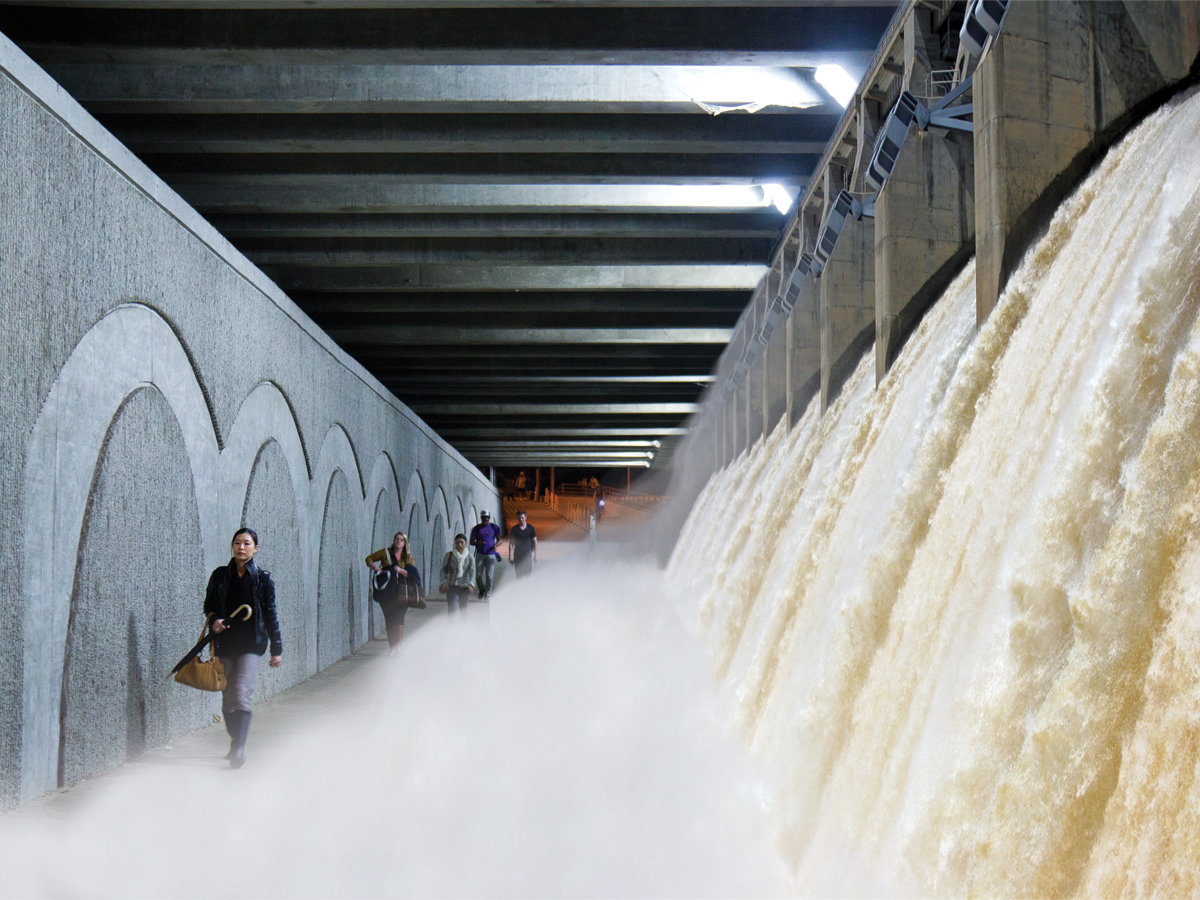
University officials recently approved the construction of a 600-foot hydroelectric dam to contain the mouth of the majestic Colorado River that snakes through parts of UC Riverside. Monikered the “Great Wall of Scotty,” the $100 million dam will be constructed in place of Parking Lot 30, which has seen scanty use from the 22,000 Highlanders who mostly live on or around campus.
Last quarter, members of the community discussed ways to improve the physical landscape of the campus with many arguing for fewer parking lots for motorized vehicles as swimming and kayaking were cited as popular modes of transportation.
Fourth-year beekeeping major Barbra Messington argued in favor of Lot 30’s demolition, saying, “Students are making the conscious decision to travel in a healthy and nonpolluting way,” and added that the dam “had to go somewhere.” Funding for the Great Wall of Scotty is being provided by an anonymous billionaire donor, according to campus public records.
Overall construction is expected to take five years to divert the river’s passageway and to lay down a cement foundation for the dam. Meanwhile, the university is expected to add 300 new faculty members to oversee the duration of the project.
Major dam goals include flash flood control, as some UCR buildings were hit with a deluge of water last year, causing thousands of dollars’ worth of damage. “It’s not a surprise,” said meteorologist Mindy Wilson of Riverside Weather Services. Typical spring weather results in “sudden rainfall with as much as 8 inches on the daily.”
UCR officials are also attempting to make the shift from solar to hydropower after an unidentified jet engine part landed on and destroyed the university’s 10-megawatt solar farm last month. The Federal Aviation Administration, the national body in charge of regulating airspace travel, has declined to comment.
With dam construction set to begin as early as this Thursday, first-year mechanical engineering major Mary Phan worries about the kind of impact the dam will make on the Riverside wetlands.
“I wouldn’t trifle with dams,” Phan said. “I heard the structures themselves can increase the chances of an earthquake occurring in an area.”
Felipe Braxton, president of Students All For Dams, an advocacy group for the construction of the dam, believes that the structure will save “hundreds of lives,” citing the campus statistics of 134 students who drowned last year while traveling to classes.
“Recent climate change has been less forgiving and it is important for humans to intervene before the world freezes over,” Braxton said, alluding to increasing concerns over global cooling in the state.
UCR hydrology professor John Litz highlighted the significance of harnessing the river’s resources, but cautioned against building too many dams as it may lead to unprecedented impacts on aquatic species, referencing the endangered Riverside freshwater salmon.
“Extremely rare fish travel through the university’s canal system and continuing construction may adversely affect their migratory routes,” he said.
With the proposal of the dam in its final stages, student protests continue to embroil Sushi by Panda Express for using the prized salmon on its menu.







